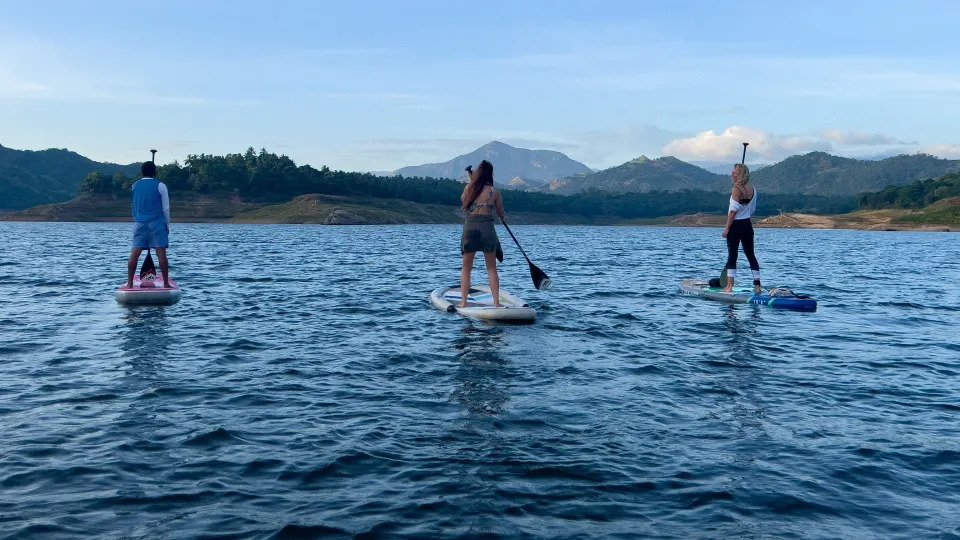Condé Nast Traveller : 9 December 2022
In April this year, when I travelled on public transport to a wellness retreat tucked in the tropical jungles of Galle, about 145km from Colombo, the staff couldn’t pick me up from the bus station. Most of them had put up for as long as two days in miles-long fuel queues at petrol pumps, only to return empty-handed as fuel stations ran out of petrol by the time their turn came. The fuel shortage meant that a few weeks later, I ran out of cooking gas at my home in Colombo, and seeing long queues for gas outside, I shifted to an electric cooker that my family thankfully owned. There were desperate scenes everywhere. Power cuts extended for more than seven hours every day. Food delivery in the capital stopped, taxis became a rarity. There were days when Colombo saw barely a vehicle on the street. It was not like anything I had seen before. Nothing was normal.
Today, things are different. Most parts of Sri Lanka have moved beyond fuel and gas queues. A new QR code for refuelling vehicles has taken care of the long lines. Power cuts are limited to one or two hours a day, but many tourist accommodations now have power backups, while food items are back on supermarket shelves. At 61%, inflation is high but lower than the 73% in September. Things are turning around and on cue, travellers are returning to the island nation.
Among them was Jitaditya Narzary, a travel blogger from India who visited Sri Lanka in November to trek through the central mountains of the country, which he said is “overshadowed by archaeological sites and beaches”. Narzary thought that the inflation would make it an expensive affair, but soon realised that the Sri Lankan Rupee had depreciated 44% against the US dollar in May this year. This means that those earning in stronger foreign currencies will have a bang for the buck although many locals find it difficult to afford basic necessities. “Compared to India, I found many things like spices and clothes to be cheaper,” Narzary said.
“I didn’t feel any concern because I’ve seen many other Indians recently visiting Sri Lanka,” Narzary added, “When I landed, it looked way more organised and even calmer than I thought. There were no tense situations, at least I didn’t spot any. Most people I came across seemed upbeat and eager to resume business. They wanted to get back to the good old pre-pandemic days.”
Narzary’s experience is the general mood as Sri Lanka’s tourism industry is bouncing back after a series of drawbacks thanks to local and foreign-owned businesses creating experiential stays and tours. In November, I travelled across the island, visiting southern beaches, mountain hamlets and cultural hotspots of the country, discovering both new experiences and classic stays that would create a memorable holiday.
One of these new spaces is indie bookshop and cafe Wild & the Sage in the beach town Unawatuna, 145km south of Colombo. Opened in April during the economic crisis, this charming spot wants to nourish the reading culture in Sri Lanka through a handpicked selection of bestsellers, storytime sessions for kids and author events with notable writers like Ashok Ferry. Other crowd-favourites include poetry nights and book clubs featuring the 2022 Booker Prize winner Seven Moons of Maali Almeida by Sri Lankan author Shehan Karunatilaka. Expect to find great coffee and friendly staff who are ready to chat with book recommendations.
A 30-minute drive south in the beach town of Ahangama is PALM, a lifestyle retreat that integrates modernism in the coconut jungle, and features six A-frame cabanas influenced by Shoreditch-infused architecture, Crossfit gym, boutique, pool, restaurant and bar built with repurposed double-height shipping containers. The economic crisis didn’t stop owner Miriam Hanifa—who has Sri Lankan roots—from expanding her tropical retreat. A minimalistic four-bedroom villa with rattan furniture opens up to the sprawling rice paddies, and two suites blend into the surrounding garden. Their in-house restaurant and bar dish up fab king crab curries to pair with local arrack-infused cocktails.
Visitors can move further south along these bustling coastal hamlets to find Tangalle, a relatively offbeat beach destination with vast, sandy beaches. Here, luxury resort chain Aman has Amanwella, a contemporary seaside getaway with a secluded palm-fringed beach and an Olympic-size pool overlooking the Indian ocean. Every room features a bathtub, plunge pool, and a large balcony with ocean views. But the real delight is in the resort’s experiences, such as their floating lounge where you can enjoy sunset canapes in Mawella Lagoon while spotting families of pelicans, storks and vibrant kingfishers.
